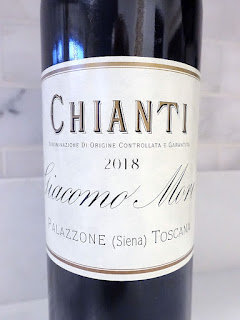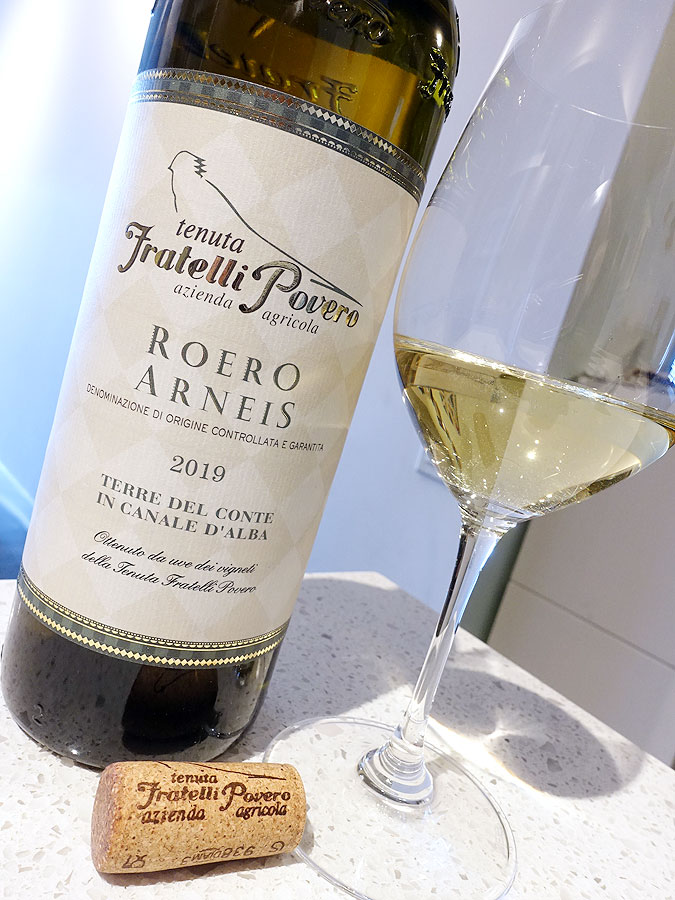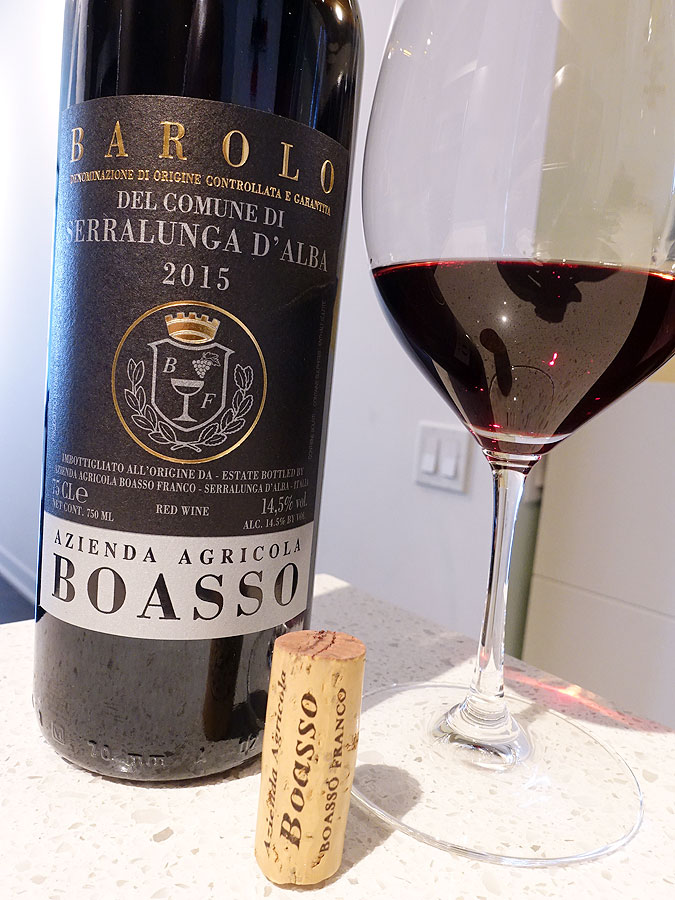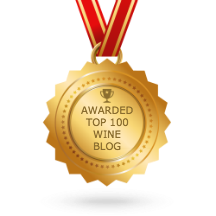wine review is a lovely, sweet, semi-sparkling (or frizzante) wine with a lower alcohol content of 5.5% alcohol by volume (abv) from Piedmont. Sustainable and vegan-friendly, this bubbly arrived at the LCBO a few weeks ago in the LCBO VINTAGES New Release Collection on .
It is produced by Cantine Povero, a winery with roots going back nearly 200 years to 1837 on the lands of Roero, Monferrato, and Langhe, in the heart of Piedmont, Italy. Modern winegrowing entered the picture in 1948, when Bartolomeo Povero (aka Grandfather Tumlin) inherited a vineyard and increased his production by planting his first vineyard. Tumlin felt a strong emotional bond towards his land and was proud to continue the tradition of his ancestors, with the ancient wisdom passed down through the generations.
An excellent vintage in 1964 inspired brothers Giovanni and Michelino Povero, the sons of Tumlin, to produce their first branded bottles of Povero wines, which in turn resulted in expanded sales across Piedmont. In 1976, the brothers acquired their current headquarters at the foot of a medieval castle in the hamlet of San Matteo, within the commune of Cisterna d'Asti, and planted a further 10 hectares of vineyards. In 1987, the third generation of the Povero family expanded the family's business as the sons of Giovanni - Luca, Daniele, and Alessio - established Tenuta Fratelli Povero and produced wines from the oldest vineyards in Roero.
In 1998, the winery was renovated and modernized, along with a focus on organic farming and sustainability, as they installed a photovoltaic system in 2010 to allow the facility to use only renewable energy during the daytime. In 2019, Cantine Povero obtained organic certification for all of their vineyards. A year later, the third and fourth generations of the Povero family began leading the future of the winery with a dedication to both tradition and innovation.
Today, Cantine Povero's philosophy is to carry on the ancient wisdom handed down generation to generation, while innovating in a sustainable approach to agriculture. With a strong commitment to the environment, beginning with Nonno Tumlin and through each generation, they have learned to listen to the seasons and observe with love the branches, bunches, and leaves, and to confidently await the reward for their efforts. They practice organic cultivation without the use of any chemicals, and minimize their use of any treatments by using their innovative weather station to monitor humidity, rainfall, and temperature. Furthermore, they are practicing regenerative agriculture and encourage a diversified and harmonic ecosystem.
This frizzante is crafted with 100% Moscato that was grown in the Asti region of Piedmont. The vines are planted in sandy and clayey soil, and cultivated using the espalier system with Guyot pruning. The grapes were manually harvested, destemmed, and then cooled to 10–12°C before being gently pressed. It was fermented at a controlled temperature in stainless steel tanks.
From a somewhat tough vintage where conditions were seldom steady, let's see how this 2023 Moscato d'Asti from Italy is tasting tonight...
Fresh, medium+ intensity aromas of peach, candied citrus, spring flowers, melon, and Flintstones vitamins, with a twist of orange. Crafted in a frizzante style, the fairly light-weighted palate is clean and refreshing with bright acidity and gentle bubbles lifting the peach, candied citrus, orange, melon, and floral notes in a gently sweet flavour profile. A touch sticky on the finish with well-balanced peach, melon, and candied citrus notes tapering to savoury and leesy notes on the long-lasting finish. Versatile and widely appealing for the patio, dinner table, or with dessert. Recommended buy! Score: 89 pts
Other lovely wines by Cantine Povero can be ordered through their Agent - Rare Earth Wines.
It is produced by Cantine Povero, a winery with roots going back nearly 200 years to 1837 on the lands of Roero, Monferrato, and Langhe, in the heart of Piedmont, Italy. Modern winegrowing entered the picture in 1948, when Bartolomeo Povero (aka Grandfather Tumlin) inherited a vineyard and increased his production by planting his first vineyard. Tumlin felt a strong emotional bond towards his land and was proud to continue the tradition of his ancestors, with the ancient wisdom passed down through the generations.
An excellent vintage in 1964 inspired brothers Giovanni and Michelino Povero, the sons of Tumlin, to produce their first branded bottles of Povero wines, which in turn resulted in expanded sales across Piedmont. In 1976, the brothers acquired their current headquarters at the foot of a medieval castle in the hamlet of San Matteo, within the commune of Cisterna d'Asti, and planted a further 10 hectares of vineyards. In 1987, the third generation of the Povero family expanded the family's business as the sons of Giovanni - Luca, Daniele, and Alessio - established Tenuta Fratelli Povero and produced wines from the oldest vineyards in Roero.
In 1998, the winery was renovated and modernized, along with a focus on organic farming and sustainability, as they installed a photovoltaic system in 2010 to allow the facility to use only renewable energy during the daytime. In 2019, Cantine Povero obtained organic certification for all of their vineyards. A year later, the third and fourth generations of the Povero family began leading the future of the winery with a dedication to both tradition and innovation.
Today, Cantine Povero's philosophy is to carry on the ancient wisdom handed down generation to generation, while innovating in a sustainable approach to agriculture. With a strong commitment to the environment, beginning with Nonno Tumlin and through each generation, they have learned to listen to the seasons and observe with love the branches, bunches, and leaves, and to confidently await the reward for their efforts. They practice organic cultivation without the use of any chemicals, and minimize their use of any treatments by using their innovative weather station to monitor humidity, rainfall, and temperature. Furthermore, they are practicing regenerative agriculture and encourage a diversified and harmonic ecosystem.
This frizzante is crafted with 100% Moscato that was grown in the Asti region of Piedmont. The vines are planted in sandy and clayey soil, and cultivated using the espalier system with Guyot pruning. The grapes were manually harvested, destemmed, and then cooled to 10–12°C before being gently pressed. It was fermented at a controlled temperature in stainless steel tanks.
From a somewhat tough vintage where conditions were seldom steady, let's see how this 2023 Moscato d'Asti from Italy is tasting tonight...
Tasting Note:
CANTINE POVERO CAMPO DEL PALIO MOSCATO D'ASTI 2023 - Sustainable, Vegan, DOCG, Piedmont, Italy (#477869) (S) - $16.95Fresh, medium+ intensity aromas of peach, candied citrus, spring flowers, melon, and Flintstones vitamins, with a twist of orange. Crafted in a frizzante style, the fairly light-weighted palate is clean and refreshing with bright acidity and gentle bubbles lifting the peach, candied citrus, orange, melon, and floral notes in a gently sweet flavour profile. A touch sticky on the finish with well-balanced peach, melon, and candied citrus notes tapering to savoury and leesy notes on the long-lasting finish. Versatile and widely appealing for the patio, dinner table, or with dessert. Recommended buy! Score: 89 pts
Other lovely wines by Cantine Povero can be ordered through their Agent - Rare Earth Wines.








































